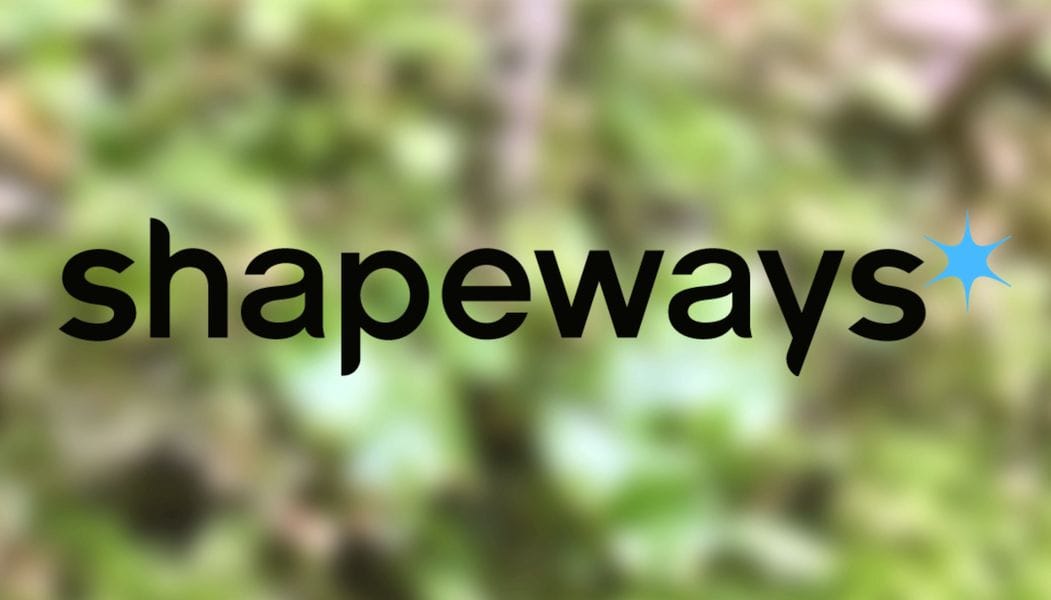
3D print service Shapeways has released their annual transparency report, and there are some interesting findings.
What’s a transparency report? It’s a formal document released to the public by a company that provides some insight into aspects of business operation that otherwise would be hidden. In these days, transparency reports typically relate to privacy, intellectual property and security aspects.
By releasing such information to the public, a company can enhance their reputation by demonstrating they are a “good citizen” and not hiding matters that could anger or cause suspicion among their constituency.
In fact, by NOT releasing such information, followers may make incorrect assumptions, come to false conclusions and even invent storylines that are far from the truth. By releasing information a company can short circuit those potential scenarios pretty easily. Shapeways explains:
We believe our transparency reports will help our community understand how our internal processes and policies are working in practice. Shapeways exists because of its strong community, and that makes it important for the community to understand how our rules are actually impacting them.
Shapeways must be one of the only 3D printing companies that releases such a report, as I am unaware of others. They’ve done so since 2015, and this is their third such report. But what exactly is in their report for 2017?
The bulk of their report deals with intellectual property issues, as this is a matter of some importance to Shapeways. This is because their contributors can upload pretty much anything to the service and offer it for sale.
This puts Shapeways in an awkward position: what if someone uploaded a design that legally belongs to someone else? How should Shapeways deal with these situations? If they do not deal with these situations, there could be serious legal consequences for the company. Thus they’ve developed clear procedures for handling them, and the statistics of those processes are publicly declared in their Transparency Report.
Shapeways lists four key takeaways from the report, which I will comment on:
The number of requests that combine trademark and copyright claims (a practice that can complicate compliance) has remained steady as compared to last year.
The flat level should be compared with overall activity on the Shapeways platform. If Shapeways grew year over year, as I suspect it did, then a flat quantity of complaints suggests the rate of infringement may be dropping. This could be due to infringers learning to “give up” due to enforcement practices.
16% of all accusations of trademark infringement were withdrawn by the rightsholder after a negotiated settlement between the accuser, Shapeways, and the targeted Shapeways user. Often this involves modifying the terms of a product listing.
A mere 16% seems to be a pretty low percentage for withdrawals. This means that 84% of claims were not withdrawn. What happened? Did they go forward to a lawsuit? Did the accused take down the offending design? That is most likely the outcome here, but Shapeways explains that of the 1,622 claims, around 600 originated from a single complainant. (Who could this be? Disney? Marvel?) It seems that Shapeways disbelieved many of the 600, and they are still in negotiation on this matter.
50% of all accusations of trademark infringement were withdrawn after being challenged by Shapeways for overstating the rights of the accuser. Note that this number is potentially misleadingly high and will be discussed further below.
This is very interesting. It seems that over-zealous claimants are at work on the Shapeways platform just as they do on YouTube and other sharing services. While this situation always seems heavy-handed, the rights holders do have a problem in that they must search ALL of the potential repositories on the Internet for their material, which must be done by bots in an automated manner. Sometimes the parameters on these bots are a bit too aggressive, as Shapeways has discovered.
All 4 DMCA counternotices submitted by users were successful.
In the USA legislation allows for a procedure to handle certain types of intellectual property claims. Without this opportunity, a designer may have to proceed through an expensive legal path to justify their use of a design. The DCMA process simplifies this and apparently has been successful for these four instances. However, the extremely low number – only four – suggests that these would have been the easiest items to counterclaim, which would be the reason for their 100% success rate. The other potential counterclaims may not have been executed because they did not have a good chance of success.
There’s another aspect of this report that is very clear after reading it: Shapeways does appear to have a comprehensive process for dealing with these matters, which are obviously of great importance to their clients and the rightsholders. It seems they frequently do act on behalf of their uploaders, even though the uploaders may not even be aware of them doing so.
Via Shapeways

